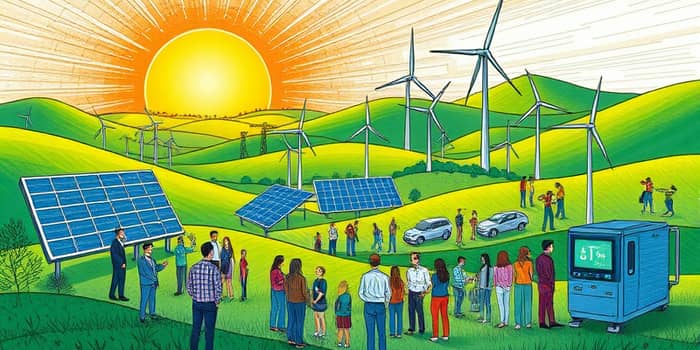
In recent years, venture capital firms have embarked on a profound transformation, redirecting significant resources toward sustainable innovation. This evolution reflects a broader recognition that profitability and purpose can advance hand in hand, as investors seek to align financial returns with environmental stewardship.
The era of unchecked software dominance is giving way to sustained double-digit investment growth in climate tech. From solar startups to carbon capture pioneers, the momentum driving venture capital into green technology is both powerful and necessary.
Global venture capital funding is projected to surpass $400 billion in 2025, a leap from $300 billion in 2021. Within that scope, clean energy startups alone are expected to secure $50 billion of investment. This surge is a testament to the market’s response to an urgent global climate crisis and the growing conviction that sustainable ventures can deliver robust returns.
Several forces are converging to fuel this pivot:
Venture capital interest spans a diverse array of green technology segments. Below is a snapshot of core themes reshaping the investment landscape:
Beyond these core areas, the intersection of biotech and climate resilience is emerging as a fertile ground. Startups harness genetic tools to develop plant-based carbon capture and advanced food production, illustrating how cross-disciplinary innovation can amplify impact.
The momentum behind green technology is inseparable from policy frameworks that de-risk investments and outline long-term commitments. In the United States, initiatives from the Environmental Protection Agency aim for deep decarbonization of power and transportation by 2026. Meanwhile, Europe’s Green Deal enforces stricter emissions targets and supports sustainable infrastructure projects across member states.
Policy certainty is a cornerstone for venture capital: clear regulations and incentives help justify the capital intensity required for large-scale clean energy projects and advanced manufacturing facilities. As regulatory bodies refine ESG disclosure standards, investors gain transparency into environmental performance, fostering trust between funds and portfolio companies.
Despite the surge in funding, several challenges temper the green tech enthusiasm. The ambition-to-execution gap remains wide, with many startups navigating long development cycles and complex supply chains. Valuation models must adapt, balancing upfront R&D outlays against future revenue streams that hinge on regulatory and market adoption.
However, these challenges also present opportunities. Entrepreneurs who demonstrate clear impact metrics and forge partnerships with governments or established industry players can unlock new financing avenues and accelerate deployment.
To thrive in this evolving environment, investors and founders must adopt agile approaches that balance risk with resilience. Building diversified portfolios across multiple green tech sub-sectors can spread exposure, while dedicating resources to deep-tech ventures ensures access to breakthrough innovations.
Entrepreneurs should prioritize transparent impact reporting, leveraging standardized ESG frameworks to communicate progress. Strategic collaboration with universities, national labs, and policy bodies can enhance credibility and unlock public grant funding alongside private capital.
Moreover, fostering robust supply chain partnerships—particularly in critical minerals for batteries and rare-earth components—can mitigate resource constraints and safeguard project timelines. By aligning technological ambition with pragmatic execution plans, stakeholders can accelerate the path from proof of concept to commercialization.
The trajectory of venture capital is clear: green technology will occupy an ever-larger share of investment portfolios beyond 2025. Mega forces such as climate imperatives, AI-driven optimization, and evolving consumer preferences are reshaping risk and reward paradigms. Specialized funds focusing on crossover niches—like AI-enabled energy platforms or circular economy solutions—are gaining traction.
As investors seek startups poised for policy-driven demand and clear impact, the bar for due diligence rises. Demonstrating not just technical feasibility but also market readiness and environmental integrity will become essential for securing growth capital.
Ultimately, this pivot represents more than a shift in capital allocation—it signals a transformation in how the private sector contributes to global sustainability goals. By channeling venture capital into green innovation, the investment community is writing a new chapter in the story of progress, one where profit and purpose flourish together.
References













